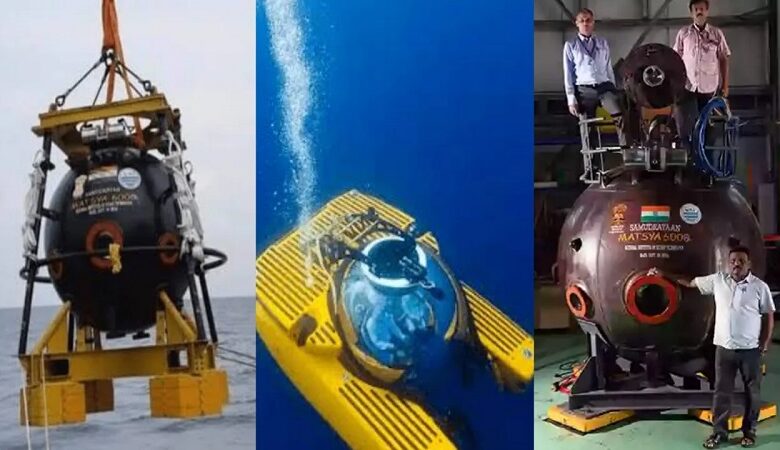India’s Next Frontier: Samudrayaan – Unveiling the Deep Ocean Mission

India’s remarkable journey of exploration extends beyond the boundaries of our planet, reaching into the depths of Earth’s oceans. Following its lunar conquest with the Chandrayaan-3 spacecraft, Vikram Lander, and Pragyan Rover, India is poised to venture into the uncharted waters of the deep sea. The forthcoming mission, aptly named ‘Samudrayaan,’ signifies India’s commitment to exploring every corner of the universe, including the mysteries hidden beneath the ocean’s surface.
The ‘Samudrayaan’ mission is currently in the development phase, marking India’s maiden foray into deep ocean exploration. This ambitious endeavor aligns seamlessly with India’s ‘Blue Economy’ initiative, which seeks to harness the vast potential of marine resources for sustainable economic growth. Minister of Earth Sciences, Kiren Rijiju, enthusiastically shared details of this mission on X, underscoring its significance. He stated, “Next is ‘Samudrayaan.’ This is ‘MATSYA 6000,’ a submersible under construction at the National Institute of Ocean Technology in Chennai.”
‘Samudrayaan,’ India’s first manned deep ocean mission, aspires to send a team of three human explorers to a depth of 6,000 meters beneath the ocean’s surface. Their mission: to unravel the mysteries of the deep sea, conduct resource assessments, and study the rich biodiversity that thrives in this enigmatic realm.
The crown jewel of the ‘Samudrayaan’ mission is the ‘MATSYA 6000’ submersible, a technological marvel crafted by the skilled hands at the National Institute of Ocean Technology (NIOT) in Chennai. This advanced ocean vehicle is poised to play a pivotal role in achieving the mission’s objectives, marking a significant milestone in India’s scientific endeavors. The designation ‘6000’ indicates the submersible’s remarkable capability to descend to depths of 6,000 meters below the ocean’s surface, a testament to India’s engineering prowess.
The ‘MATSYA 6000’ submersible will be equipped with a suite of cutting-edge instruments designed to facilitate seamless exploration of the deep sea. Notable among these are the Autonomous Coring System (ACS), the Autonomous Underwater Vehicle (AUV), and the Deep Sea Mining System (DSM). These sophisticated tools will empower scientists to navigate the challenging depths of the ocean, uncovering its hidden treasures and secrets.
One of the primary objectives of the ‘Samudrayaan’ mission is to conduct resource assessments in the deep sea. This endeavor will involve the exploration and evaluation of valuable substances, including nickel, cobalt, and manganese, which are vital for various industries and technologies. By venturing into the depths of the ocean, India aims to secure access to these critical resources, reducing its dependence on imports and bolstering its strategic self-reliance.
However, pioneering missions such as ‘Samudrayaan’ come at a substantial cost. Estimates suggest that the Deep Ocean Mission will require an investment of Rs. 4,077 crores, spanning the period from 2021 to 2026. Presently, there is a budget allocation of Rs. 1,400 crores for this mission, with Rs. 405.92 crores already expended and Rs. 225.35 crores incurred.
India’s commitment to exploring the deep ocean extends beyond the ‘Samudrayaan’ mission. In December 2022, under the auspices of the Deep Ocean Mission, a Deepwater Autonomous Underwater Vehicle (AUV) named the Ocean Mineral Explorer (OMe 6000) was deployed to explore depths of approximately 5,271 meters. This underwater mission sought to locate and assess minerals at the Polymetallic Manganese Nodule (PMN) site in the central Indian Ocean Basin (CIOB). The findings from this exploration will serve as a valuable resource for the forthcoming ‘Samudrayaan’ mission, aiding in the fulfillment of its scientific objectives.
India’s entry into deep ocean exploration represents a significant leap in its scientific and technological capabilities. The mission not only holds the promise of unlocking valuable resources but also contributes to our understanding of the intricate ecosystems that thrive in the ocean’s depths. The data and insights gathered from this mission will inform crucial decisions related to resource management, environmental conservation, and the sustainable utilization of marine resources.
News Mania Desk / Agnibeena Ghosh 14th September 2023






